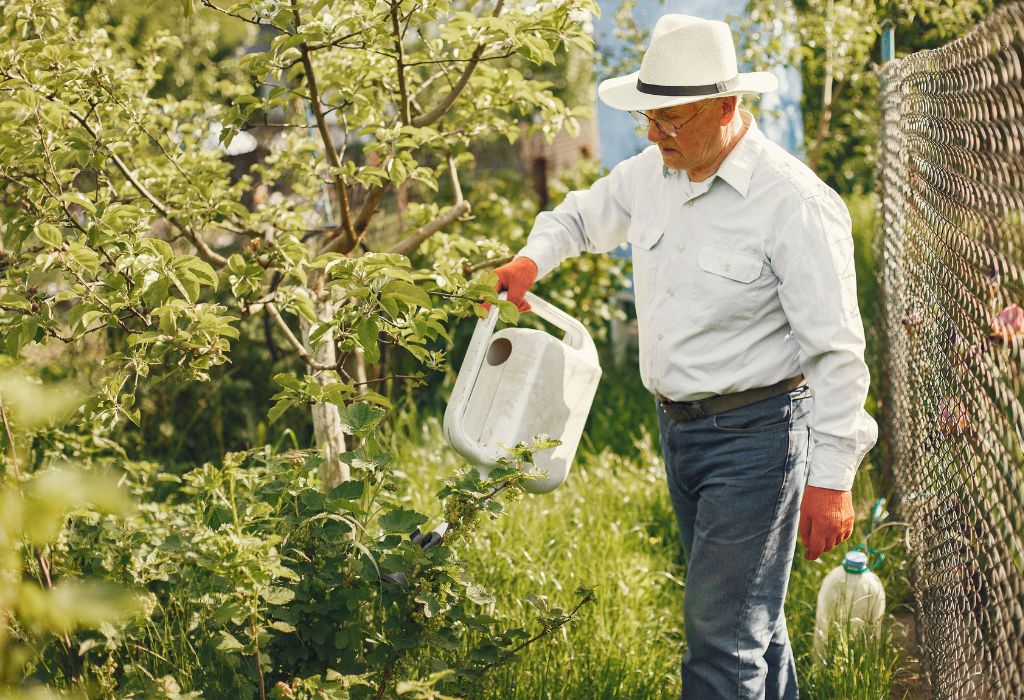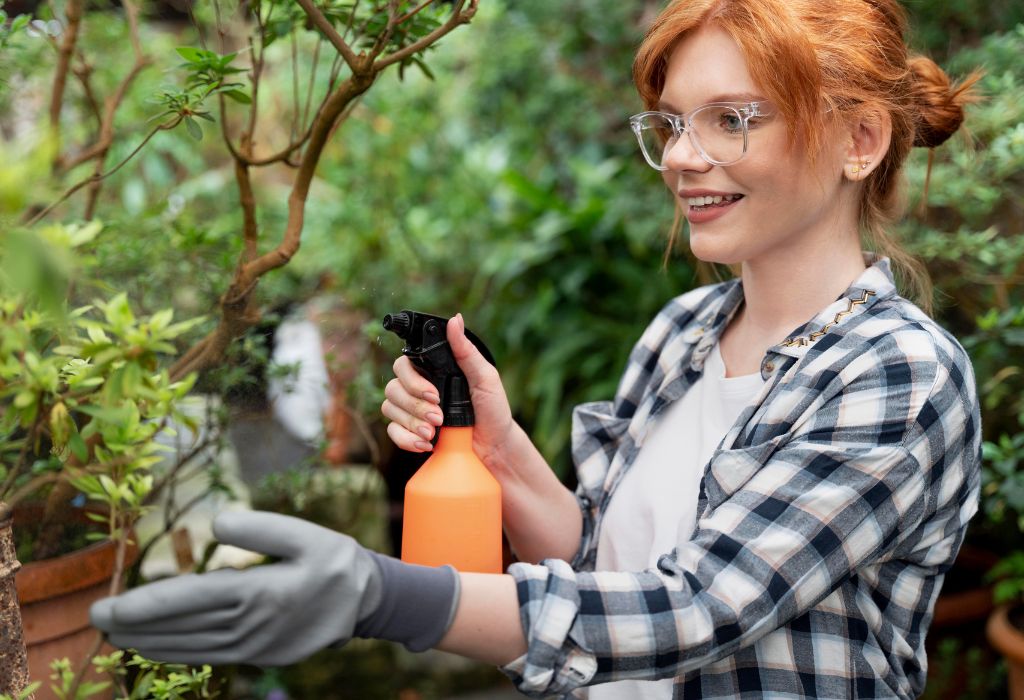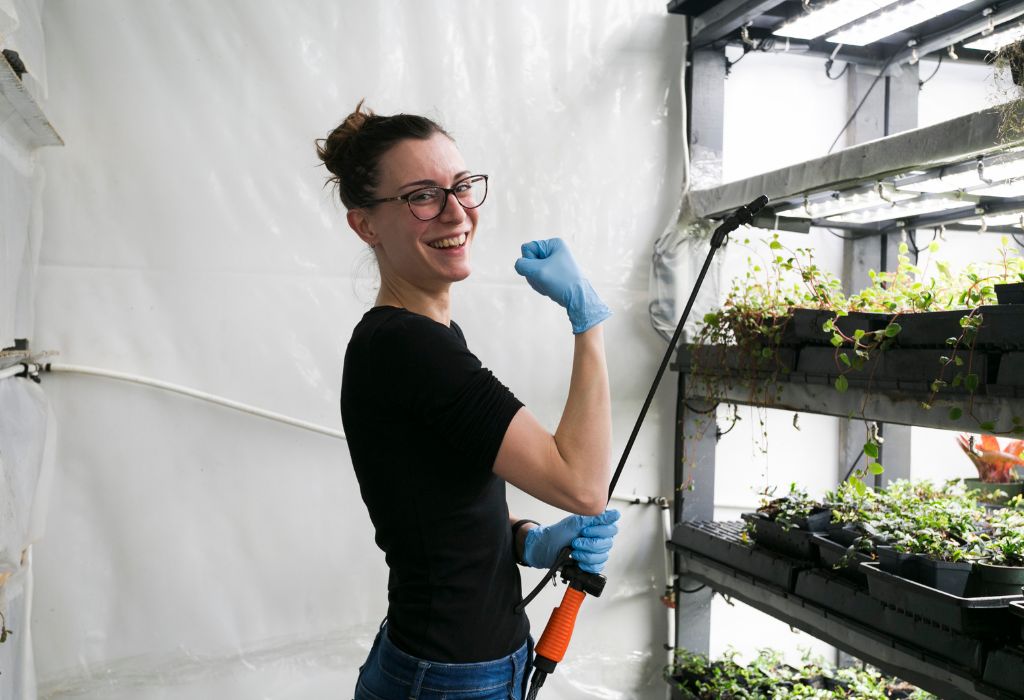A thriving vegetable garden can quickly suffer when weeds take over, stealing sunlight, nutrients, and water from crops. Many gardeners wonder, can I spray weed killer in my vegetable garden safely without harming soil or food?
Weeds are responsible for up to 34% of global crop losses every year Source. Yet the Environmental Protection Agency reports that over 70% of homeowners misuse herbicides Source.
This guide shares proven tips to control weeds effectively while protecting soil health, crops, and harvest quality. Readers will learn when to spray, how to choose safe products, and ways to prevent weeds without risking long-term damage.
Can I Spray Weed Killer in My Vegetable Garden Without Risk?

Spraying weed killer in a vegetable garden is possible, but safety depends on using the right product correctly. Not all herbicides are suitable for edible crops, and label directions must always guide application decisions.
Products designed for vegetable gardens break down faster in soil and pose less risk to beneficial microbes and plant roots. Choosing herbicides labeled for food crops ensures residues will not persist until harvest time.
Environmental factors like wind, rain, and soil type also influence safety. Spraying on calm, dry days prevents drift and reduces runoff risks, keeping chemicals where they are intended to work.
Dosage matters just as much as timing. Overapplying weed killer can harm soil health and delay planting schedules, while using the correct amount controls weeds without damaging crops or ecosystems.
Types of Weed Killers for Vegetable Gardens
Weed killers fall into several categories, and understanding these differences helps gardeners choose the safest option for edible crops. Selective herbicides target specific weed species while leaving vegetables unharmed when applied correctly.
Non-selective herbicides kill any plant they touch, so they must be used with extreme caution around food crops. These products are typically limited to spot treatments in areas where vegetables are not present.
Pre-emergent herbicides prevent weed seeds from germinating, creating a protective barrier in the soil before planting or between crop rows. Post-emergent products kill existing weeds and are effective when applied at the right growth stage.
Organic options such as vinegar-based sprays or corn gluten meal offer safer alternatives to synthetic herbicides. While they may require multiple applications, they break down quickly and reduce chemical exposure in food gardens.
Best Time to Spray Weed Killer in a Vegetable Garden

Timing plays a critical role in safe and effective weed control. Spraying too early or too late can harm crops, waste product, or allow weeds to regrow quickly.
Weather conditions matter because wind carries chemicals to unintended areas, and rain can wash treatments into the soil or water sources. Calm, dry days provide the safest and most efficient spraying conditions.
Pre-emergent herbicides must be applied before weed seeds germinate, while post-emergent sprays work best when weeds are actively growing. Matching product type with weed growth stages improves results and reduces risks.
Evening applications often reduce evaporation and limit exposure to pollinators like bees. Checking forecasts before spraying ensures chemicals have time to work effectively without environmental interference.
Safe Application Methods to Protect Soil and Crops
Using the right application methods helps control weeds without damaging soil health or vegetable plants. Spot treatments target individual weeds instead of spraying the entire area, reducing chemical use and contamination risks.
Shielded sprayers prevent drift by keeping herbicides off nearby crops. Applying with low-pressure nozzles further reduces the chances of chemicals spreading beyond the target area.
Personal protective equipment such as gloves, masks, and long sleeves keeps gardeners safe from direct contact with herbicides. Following product labels for mixing and application rates ensures both safety and effectiveness.
Avoid spraying in windy conditions or near water sources to prevent unintended chemical movement. Keeping chemicals contained to the target area protects both the soil ecosystem and future harvests.
Organic and Natural Alternatives to Chemical Sprays

Many gardeners prefer organic solutions to keep vegetable gardens safe and chemical-free. Mulching with straw, leaves, or wood chips suppresses weeds naturally by blocking sunlight and conserving soil moisture.
Vinegar-based sprays provide a non-toxic option for killing small, young weeds on contact. While they may need repeated applications, they break down quickly and leave no long-term residue.
Boiling water offers a simple way to kill weeds in pathways or garden edges without affecting soil health. It works best for spot treatments where no crops are nearby.
Corn gluten meal acts as a natural pre-emergent, preventing weed seeds from sprouting when applied at the right time. Combined with other organic methods, it forms part of a long-term weed control strategy.
Long-Term Weed Prevention Strategies
Preventing weeds before they become a problem is the best way to keep vegetable gardens healthy. Crop rotation interrupts weed life cycles and improves soil fertility, reducing weed pressure each season.
Cover crops like clover or rye protect bare soil, prevent erosion, and outcompete weeds for sunlight and nutrients. When tilled under, they also add organic matter to improve soil health.
Dense planting designs limit open space, making it harder for weeds to establish. Combining this with mulching creates a natural barrier that blocks weed growth effectively.
Minimizing soil disturbance by reducing frequent tilling keeps dormant weed seeds buried. Fewer soil disruptions mean fewer opportunities for weeds to sprout near crops.
Common Mistakes to Avoid When Spraying Weed Killer

Spraying on windy days is a common error that leads to chemical drift onto vegetables and nearby plants. Even light breezes can spread herbicides far beyond the target area.
Overapplying weed killer does not improve results and often harms soil health. Following product labels for dosage prevents unnecessary chemical buildup.
Spraying just before rain reduces effectiveness and increases runoff risks. Rain washes herbicides into soil and water sources before they can work properly.
Using the wrong herbicide for specific weeds or growth stages wastes time and money. Matching the product to the type of weeds ensures safer and more efficient control.
Protecting Kids, Pets, and Pollinators
Keeping children and pets safe during weed control requires careful planning. Herbicides should always be stored in sealed containers away from living spaces and play areas.
After spraying, follow the product’s re-entry interval guidelines to know when it is safe for kids and pets to return. These instructions vary depending on the herbicide used.
Pollinators like bees are vulnerable to certain chemicals when foraging on flowers. Spraying in the evening when pollinators are less active reduces the risk of accidental exposure.
Choosing low-toxicity or organic herbicides further minimizes potential harm to wildlife while maintaining effective weed control in vegetable gardens.
Conclusion
Spraying weed killer in a vegetable garden can be done safely when the right products, timing, and methods are used.
Reading labels carefully, following dosage instructions, and applying herbicides under ideal weather conditions protect both crops and soil health.
Combining chemical weed control with organic methods like mulching, cover crops, and crop rotation reduces long-term risks. This balanced approach keeps vegetables thriving while minimizing environmental impact.
By planning ahead, choosing the correct herbicides, and following safety guidelines for children, pets, and pollinators, gardeners can maintain productive and healthy vegetable gardens season after season.
I’m Maya L. Greenwood, a lifelong plant lover who believes anyone can grow something beautiful with the right guidance. After years of testing soil mixes, pruning methods, irrigation tricks, and pest-safe solutions, I started EasyGardenTips.com to turn hard-won lessons into step-by-step advice. From seed starting and container gardens to composting and seasonal checklists, my goal is to make gardening simple, sustainable, and fun.
